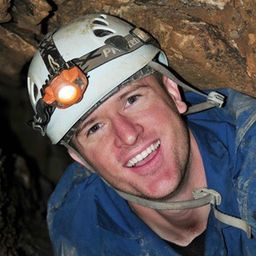General Session (Dendroclimatology, PT4) (rescheduled)
My Session Status
Rescheduled from June 28th to June 29th
Sub Sessions
Floods and droughts have recently worsened in the Fraser River Basin (FRB), British Columbia, causing significant impacts to western Canadian economy, ecosystems, and societal wellbeing, as well as the costliest natural disaster in the province’s history in 2021. These extreme events present a major management challenge since the FRB is susceptible to unregulated spring flood and summer drought events, even in the same year. Meanwhile observational streamflow datasets are both short and po...
Ring-width (RW) and Blue Intensity (BI) parameters (earlywood - EWB, inverted latewood – LWBinv, and delta - DB) were measured from samples of Araucaria araucana from six sites in northern Patagonia, Argentina. The distance between the most southerly and northerly sites is ca. 130 kms. Despite a much weaker between-tree signal for the BI parameters than RW, principal component analysis identifies a much stronger regional between-site signal for the BI parameters. Split period correlation r...
The impacts of inland flooding caused by tropical cyclones (TCs), including loss of life, infrastructure disruption, and alteration of natural landscapes, have increased over recent decades. While these impacts are well documented, changes in TC precipitation extremes—the proximate cause of such inland flooding—have been more difficult to detect. Here, we present a latewood tree-ring–based record of seasonal (June 1 through October 15) TC precipitation sums (ΣTCP) from the region in North ...
The Laacher See Eruption (LSE) ranks among Europe’s largest Upper Pleistocene volcanic events. Although its tephra deposits represent an important isochron for the synchronization of proxy archives at the Late Glacial to early Holocene transition, uncertainty in the eruption age has prevailed. Combined analysis of high-precision ring width and radiocarbon measurements from individual rings of trees that were killed during volcanic eruptions and buried by their deposits can provide eruption...
"Little is known about the impact of volcanoes on trees from the Southern Hemisphere. In this study, we investigated whether volcanic signals could be identified in ring widths from eight dendrochronological species from New Zealand, using superposed epoch analysis. We found that most species are good recorders of volcanic dimming and that the magnitude and persistence of the post-event response can be broadly linked to plant life history traits - whether the species responds as a 'stress ...
The current climate warming is unique in terms of its ubiquity and synchrony on a global scale. Over the last millennium, pre-industrial periods with warmer and colder temperatures occurred at different times in different locations around the globe (Neukom et al., 2019). Long-term temperature reconstructions in the Southern Hemisphere remain sparse and not always consistent among them (Lara et al., 2020). Therefore, to understand the temporal and spatial patterns of global-scale temperatur...
We report on research to develop quantitative, annually resolved, multi-century, tree-ring reconstructions of streamflow for 12 interstate river systems in eight states (Alabama, Florida, Georgia, Louisiana, Mississippi, North Carolina, South Carolina, and Virginia) in the South Atlantic Gulf Basin (AGB) of the southeastern United States.We used a nested principal components regression method to develop annually resolved tree-ring reconstructions of warm-season (March-October streamflo...
Circulation models forecast changes in global temperature and precipitation that will likely alter forest function. North America is expected to experience increases in intensity and frequency of hot days and nights, and is already experiencing severe and frequent drought and forest fires. Current forest dieback has been attributed to climate change, however forest resilience to climate variability is not well understood. Tree ring records can be used to assess this resilience. In particul...







